
Sustaining Your TroubleNation Group
You’ve set up your group, you have members, and you’re off to a great start! Now, you have to keep your membership engaged so your group stays active in the long run. Work your way through our checklist for new groups and begin thinking about putting the pieces in place to keep your group engaged and thriving. Remember: many people will join your group because they are angry, upset, or concerned about what’s happening to our country. But they will keep coming back because of the people.
Powerful action is much more sustainable over time if we consistently show up for one another as human beings. Communication is key. Group members should feel comfortable speaking up when they need fresh ideas, are struggling with something, or just need a break. It’s also important to create space for sharing new ideas — it’s amazing what the hive mind can come up with!
Here are some best practices we’ve learned:
Keep In Touch
Meet Up
Make It Fun
Prioritize Self-Care
Make It Welcoming
Create Space to Learn
Safety First
Fundraising
Keep in Touch!
You know the only group chats you keep up with are the ones that keep up with you. You need to be able to communicate with your group regularly in a way that works for them. Groups should have a communication plan and tools in place for both regular communication and urgent/rapid response communication.
Through your group’s landing page, you can get access to email addresses for your members. But you probably want to have more information — like phone numbers and addresses or any other information that could help you engage with that person. Consider using a Google Form to create a new member survey so you can gather additional information you may need (Kids in school? Issues they care most about? Favorite snack?).
ACTION: Create a Communication Plan
Discussion forum on your landing page
This is a great space for reminders, sharing event signups, and fostering conversation. Be sure to ask your group members to set up their accounts to receive notifications so they won’t miss anything.
As we mentioned earlier, we strongly recommend setting up a dedicated email address for your group. If you have multiple group leaders, it can be helpful for each person to create their own email address that includes both the group name and their own name — for example, goodtroublesmithtown-jane@gmail.com. This keeps communication organized and makes it clear who messages are coming from.
Signal
Should you use Signal to share top-secret war plans, like the Trump Administration recently did? No. Can you use it to stay connected to your group? Yes! Signal is like a group text but a little more secure (and — bonus! — it’s not owned by Meta). Group members ask to join, and you control access. Download the app and check it out — our TroubleNation group leaders are telling us it is an especially great tool for more urgent communications.
Facebook groups are still one of the primary ways TroubleNation groups communicate — but keep in mind that not everyone uses Facebook. Relying on it alone could leave some members out of the loop. Plus, Facebook’s algorithm often limits the visibility of political content, so it’s important to have additional ways to stay connected with your group.
Future: Red Wine & Blue app!
We are working on rolling out a mobile app that will offer a gathering place for our members — our Troublemakers — to have conversations and find sisterhood. It’s also a place to take action, with tools and resources to help you organize in your state and local community.
Meet Up!
The TroubleNation platform has tools to help you easily set up your event and invite others. Challenge everyone you invite to bring a friend (or 10 — the more, the merrier!). You’re planning a meeting, but think of it more like a party. Events will set the tone for how your group rolls. Hold meetings in someone’s home or at a fun venue like a wine bar to keep the vibe chill. It’s way more social than a community meeting room with the dreaded whiteboard. We’re talking wine (or your beverage of choice), snacks, and comfortable seating. It’s a social gathering, a place to form new friendships, commiserate, and share your feelings about what’s happening locally and across the country.
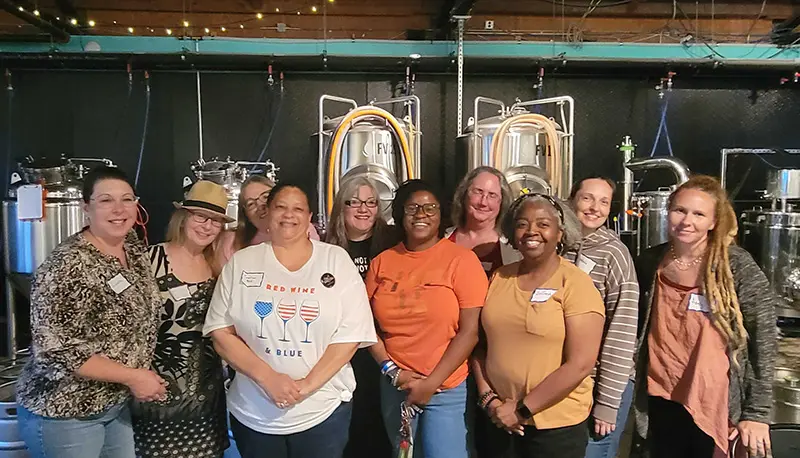
Brewery meetup in Gaston County, NC
Start every meeting with time for people to talk and get to know each other. TroubleNation groups across the country all report that this is such a key ingredient to creating welcoming and nonjudgmental spaces! Above all, you want your group to bond — you’ve found your people! Allow time for people to introduce themselves and to share their personal stories. What brought them out on a weekday evening to spend time with people they (mostly) don’t know?
In addition to the social and bonding time, show you also mean business. Incorporate a brief educational component and have an easy, localized call to action. It can be as simple as calling elected officials, learning which seats are up in your area this year and who’s running, attending a school board meeting, or completing a training. Women get it done — the big stuff and the small stuff all matter.
Make It Fun!
“People don’t show up for meetings. They show up for people.”
- ACTION: Use creative events to form your group and get it established.
Plan events that aren’t just another meeting to facilitate this process. These events don’t have to be fancy! You can plan:
- Informal potlucks or barbecues (some just for members, and some to include partners or families)
- Holiday parties
- Coffee meet-ups
- Trivia nights (either at home or at a local bar)
- Hike a local trail
- Incorporate virtual events when getting together in person is difficult
Here are some other specific ideas TroubleNation leaders are using to build a stronger sense of community among their members.
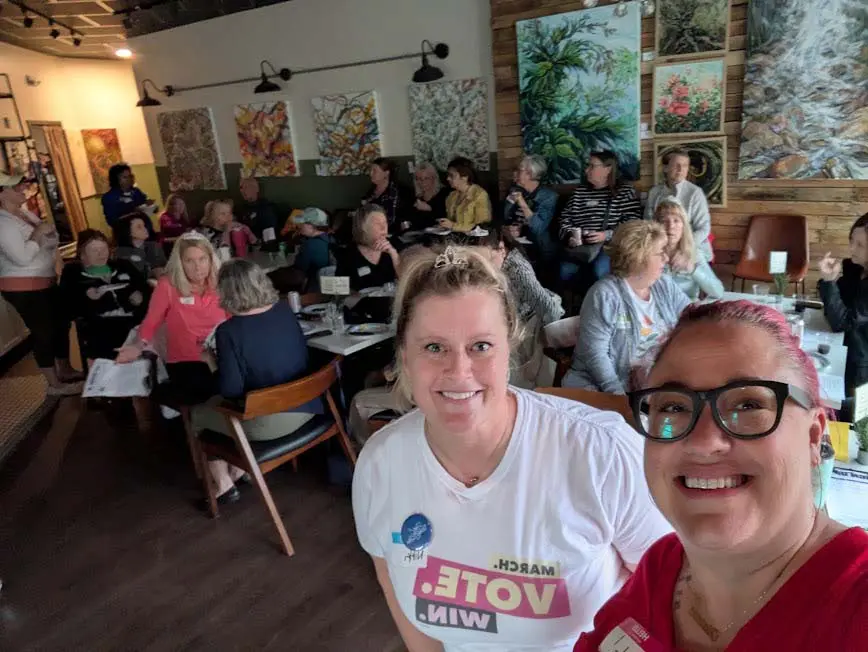
ACTION: Potluck and Post-its party.
ACTION: “Speed dating” events.
- Have someone be the “timer” to let everyone know when to switch partners.
- Set out bowls at each conversation station with questions to use as prompts.
ACTION: Hold watch parties.
ACTION: Host an Unhappy Happy Hour.
Gather your group to celebrate good news and grouse about things that need to be changed. And then, of course, start planning how you’ll work together to make that change happen! As another option, you could host a Keep Calm and Wine On to simply focus on community building. Don’t feel like you need an agenda for every meeting/event — sometimes it’s enough to just get together and find like-minded friends. Commiserate, celebrate, or activate — whatever your end goal is, get there organically through natural conversation.
ACTION: Take it outdoors with a garden party.
ACTION: Host a PowerPoint community vision party.
- Have members share vision boards and use this to spur ideas for actions.
- Get to know group members better by learning their community priorities.
Check out our explainer on how to host a Vision Board event!
ACTION: Eat cake in the park.
ACTION: Create a Banned Book Club.
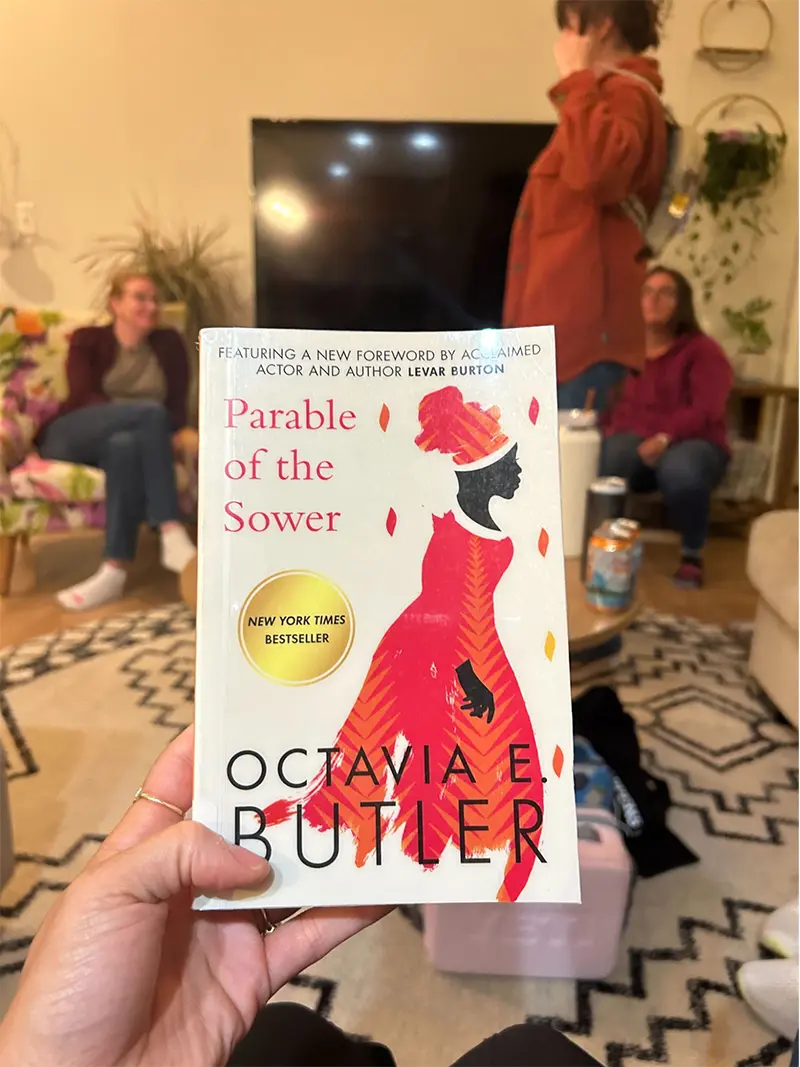
Create your own Banned Book Club
Prioritize Self-Care
“We can’t change the world if we don’t take care of ourselves first. When we care for ourselves, we discover our most authentic selves — and that’s who the world truly needs.”
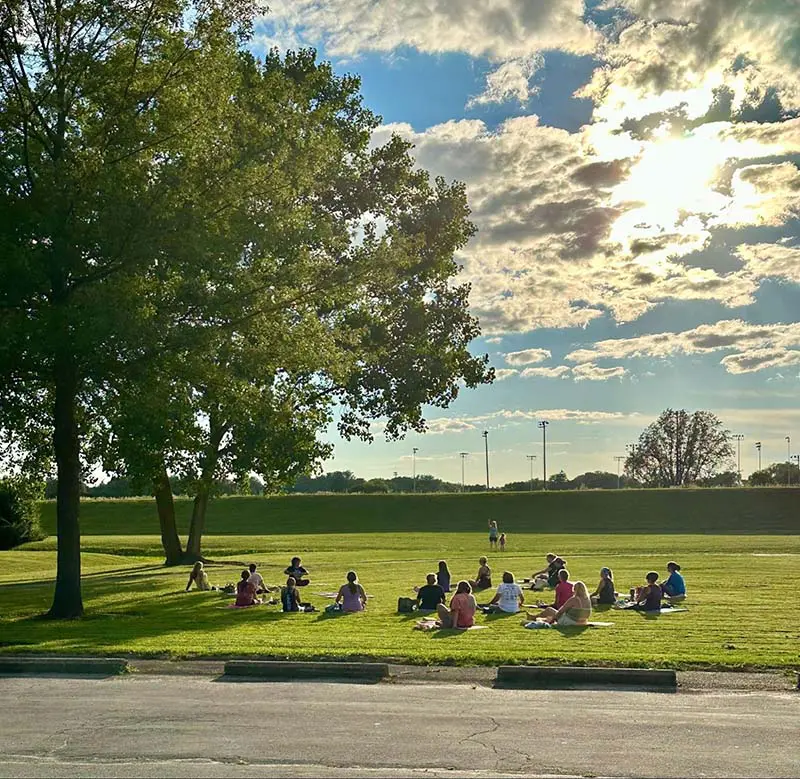
Ohio TroubleNation group, Northwest Ohio Good Trouble
Events that prioritize mental health and well-being
Organizing can be intense, so having dedicated moments to step away from that can make a huge difference. It also helps you to keep your perspective and ensure your group members don’t become burned out. Incorporate self-care tactics into your group’s activities. In tough times, taking care of our mental health is critical. Your group members may want to learn how to do this better, but so might your larger community.
ACTION: Host a “Mental Health as Resistance” event with a local therapist.
ACTION: Host a group yoga event at a local church or community center.
ACTION: Discuss Our Sustaining Activism Handout
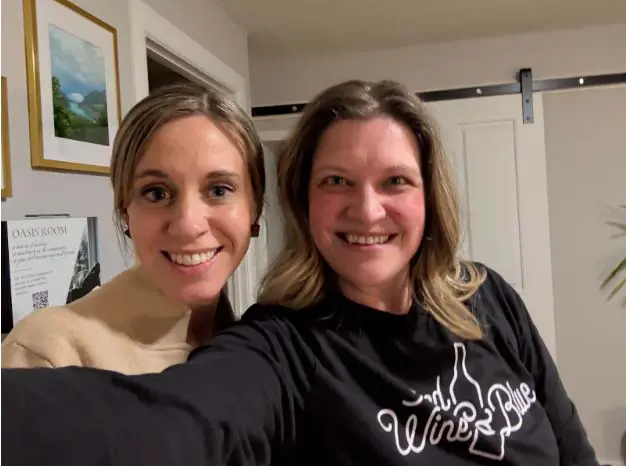
Make It Welcoming
In building community, you will encounter a wide variety of people, some of whom are different from you. We know our diversity is our strength. Points to remember include:
Listen first, speak thoughtfully
Prioritize listening to the people most affected by an issue. Don’t assume you understand their experiences — let them guide the conversation and strategy when it directly impacts them. Ask how you can help instead of assuming what they need.
Educate yourself
Do your homework to learn about histories, struggles, and cultures outside your own. Avoid putting the burden of education on marginalized group members unless they offer to teach. Verna Myers wrote an excellent book that would make a great book study for a group called What if I Say the Wrong Thing?: 25 Habits for Culturally Effective People.
Speak up, not over
Use your voice and privilege to amplify others, especially when they’re being ignored or disrespected. In meetings or events, redirect attention if someone is being spoken over or dismissed.
Respect leadership from within the community
Support leaders from any community you work with, even if your instinct is to take charge. Keep in mind that sometimes, partnership means stepping back to make space for another.
Check your biases and stay humble
We all have blind spots. Don’t get defensive when you get feedback that you said or did something hurtful — listen, apologize if needed, and do better.
Show up consistently
It isn’t just about the marches or meetings — it’s how you show up when things are quiet, too. Stay engaged over the long haul, not just when it’s trending or convenient.
Create Space to Learn
Keep in mind that many who are inspired to join are not sure what organizing really is or how to foster it. This is where education comes in. Here are some ideas TroubleNation leaders are using to educate their groups about the power of organizing.
ACTION: Learn about community building from the past.
From the Civil Rights Movement to the Women’s Suffragist Movement to South African Apartheid, and more, we have powerful examples of what building community can accomplish. You and your group can learn about them together.
- Read and discuss a book highlighting one of these movements, such as Freedom Is a Constant Struggle: Ferguson, Palestine, and the Foundations of a Movement by Angela Y. Davis or Hope in the Dark: Untold Histories, Wild Possibilities by Rebecca Solnit. Both explore approaches to community building, big and small.
- Watch a documentary film and chat about it afterward. Films great for discussion include Eyes on the Prize, The Black Power Mixtape, as well as the more recent Not Done: Women Remaking America.
ACTION: Host a Join or Die Screening
Join or Die is “a film about why you should join a club … and why the fate of America depends on it.” Legendary social scientist Robert Putnam “explores three urgent civic questions: What makes democracy work? Why is American democracy in crisis? And, most importantly… What can we do about it?”
Screening the documentary has a fee that could be offset by setting a modest ticket amount. The Join or Die website offers a way to schedule your screening to draw in more community members and downloadable discussion prompts.
Grow stronger as a group by learning together
Actions:
- Get in the habit of listening to Red Wine & Blue’s podcasts (there are several!) regularly and discussing them with your group.
- View and discuss one of Red Wine & Blue’s training videos on coalition building. Connect with Red Wine & Blue and be a part of our events and community.
Help your group develop new skills
Plan meetings to develop new skills or fine-tune ones you already have.
Actions:
- Bring someone in to lead a workshop or participate in one online. Marshall Ganz, who invented the concept of the Story of Self discussed in the Messaging section of this guide, has an excellent training.
- Invite a coalition partner to visit and share their experience. Consider organizations with local chapters, such as the Urban League, the NAACP, and Habitat for Humanity, but also grassroots groups that were formed to meet specific needs within your community like food pantries, local LGBTQ+ clubs — check out your local library bulletin board for ideas!
Safety First
Part of organizing a group involves having a plan for your security online, data privacy, and safety of yourself and your members. We’re sharing best practices and tips from TroubleNation group leaders making it work — download our fact sheet on staying safe and secure while making good trouble. For more detailed information on staying safe both digitally and in-person, The Activist Checklist provides guidance on how to be more secure without needing to become a security expert.
Fundraising
From time to time, your group may want to raise funds for a specific purpose (like group t-shirts or booth space rental) or just to have a “kitty” to use when a need arises. We do not ask our TroubleNation groups to become any kind of official entity, so setting up a bank account for collecting funds isn’t necessary. Lots of our groups keep any donations from members in an envelope, but if that isn’t comfortable for you and you would like a way to digitally collect funds, consider these options:
Betterworld
This is a great option for grassroots groups that are not set up as nonprofit organizations. Not only can you create donation pages, but you can also use the site for other types of fundraising, such as ticketed events or auctions. They also have great fundraising ideas on the website.
PayPal Money Pool
When you are collecting for something specific, like t-shirts, this may be the easiest way to do it. The Money Pool gets you a dedicated landing page for your fundraising that will need to be connected to a personal account, such as a group leader. Once funds have been raised, the pool is released to the account user for disbursement.
Additional Resources: Building Your Community
- Application to start a group
- Good Neighbors Getting It Done in Western New York
- MailChimp for group emails
- Signal for group communication
- PowerPoint Vision Boards
- Join Or Die Documentary
- Marshall Ganz skill-building workshop
- The Activist Checklist for online and offline safety
- Betterworld for fundraising
- PayPal Money Pool
- Community Service step-by-step guide
- Canva for graphic design
- QR Code Monkey
- Creating a Story of Self
